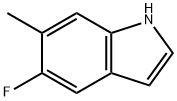Structure–Activity Relationship (SAR) Optimization of 6-(Indol-2-yl)pyridine-3-sulfonamides: Identification of Potent, Selective, and Orally Bioavailable Small Molecules Targeting Hepatitis C (HCV) NS4B
Abstract
A novel, potent, and orally bioavailable inhibitor of hepatitis C RNA replication targeting NS4B, compound 4t (PTC725), has been identified through chemical optimization of the 6-(indol-2-yl)pyridine-3-sulfonamide 2 to improve DMPK and safety properties. The focus of the SAR investigations has been to identify the optimal combination of substituents at the indole N-1, C-5, and C-6 positions and the sulfonamide group to limit the potential for in vivo oxidative metabolism and to achieve an acceptable pharmacokinetic profile. Compound 4t has excellent potency against the HCV 1b replicon, with an EC50 = 2 nM and a selectivity index of >5000 with respect to cellular GAPDH. Compound 4t has an overall favorable pharmacokinetic profile with oral bioavailability values of 62%, 78%, and 18% in rats, dogs, and monkeys, respectively, as well as favorable tissue distribution properties with a liver to plasma exposure ratio of 25 in rats.








